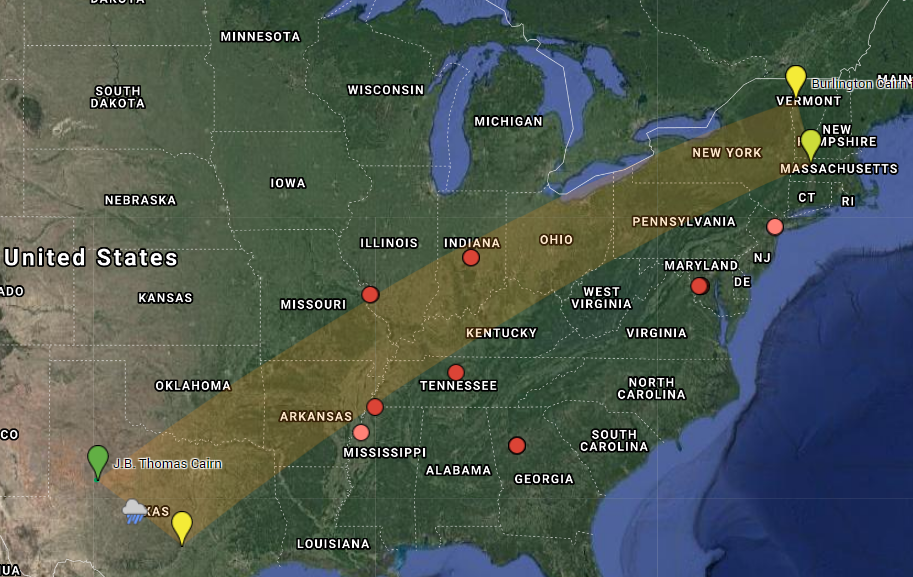At the core of spirit bridge technology is the awareness that awareness is not unitary. Consciousness is complicated, made of many moving parts, each of which is also conscious on some level.
This is the “physics” behind Frazer’s “sympathetic magic“, not just the “law of contagion” but also the “law of similarity”. It is worth noting that the concepts are far more ancient than The Golden Bough, being noted in folklore as far back as we have records of said folklore.
Parallels can be found in the Bhagavad-gita’s “atomic soul”, though interpretations of this seem to frequently fall into the traps of Monism and a unitary human soul. Rather, it is important for us to come to grips with a world in which everyone and everything is a gestalt consciousness.
Similar to the biological concept of a holobiont, our singular “soul” is a holonoont– a whole comprised of many different consciousnesses that express themselves as one spiritlife “organism”. Just as we practice symbiosis, we (and all things) exercise symnoesis.
The grand irony here is that the term “symnoesis” was coined by the atheist Richard Dawkins as part of his meme hypothesis– an idea that cannot be tested by modern science. The very refusal of mainstream scientists to entertain non-materialistic explanations makes it impossible to understand why and how memetics works. Rather, it is only those scientists who’ve gone “through the looking glass” while searching for the seat of consciousness who are on the right track.
By this I mean the recently-rediscovered field of panpsychism, which is what guys who want to sound important call animism once they accidentally stumble on it. Put simply, panpsychism is animism with a varnish of upper-class snootiness applied.
Why is all this important?
Because if the universe is conscious “all the way down”, that means that some parts of our soul exist in places where spacetime begins to behave very weirdly. Am I talking about quantum physics? Yes… and no.
Quantum physics is the best our primitive science can do to explain the weirdness that happens as one approaches the Planck length. Divorced from the resolutions provided by animism, concepts like Heisenberg’s uncertainty principle break the brains of our smartest physicists.
Similarly, New Age “gurus” latch onto the comparatively rare phenomenon of quantum entanglement in an attempt to explain how we are all “ONE” or some nonsense like that.
So no, I’m not going to try to use quantum mechanics to explain why animism is important to esoteric practice- whether or not you choose to believe in it. Rather, I will note that quantum mechanics is an attempt to explain various phenomena- it is a map, not the territory. Animism is simply the acceptance that these phenomena, specifically the exercise of choice at the smallest observable scales, are real and that the pattern holds “all the way up”.
In other words, if we accept that the tiniest fractions of reality have some measure of awareness and free will, then as we add size and complexity, choice and consciousness will be found at all scales of size and complexity.
Therefore, rocks, trees, humans, birds, insects, mountains, rivers… all embody complex consciousnesses. They all have (and are) souls and can therefore be interacted with on more than a purely physical level. Indeed, human experience has long noted the existence of both embodied and disembodied spiritlife.
The acceptance of disembodied spiritlife can easily be explained by other concepts that physicists are still struggling to integrate into materialism and determinism– namely alocality and atemporality. One of the reasons that quantum entanglement freaks people out is that it defies our understanding of the limits of spacetime by seeming to ignore both time and distance constraints.
Yet, humans have long known that many Powers exercise some degree of alocality by being able to manifest Their presence in multiple places at the same time. Similarly, many also evidence some degree of atemporality by being aware of future events or at least future possibilities.
I find it interesting that some physicists have even postulated that space and time are products of consciousness instead of being inherent qualities of energy and matter. Of course, once we accept that consciousness is an inherent quality of energy and matter, the whole heap turns on its head.
It seems therefore that at the smallest levels, our universe is aware, but doesn’t fully comprehend time and space. At the Newtonian levels (what we think of as objective reality), matter and energy are organized into units large enough to comprehend a shared concept of time and space, but are deeply limited by it. At a more divine level of complexity, the Gods and other Powers both perceive our shared spacetime and are also aware that it is not truly binding- space and time are somewhat malleable to sufficiently complex and powerful consciousnesses.
The important takeaway for us as landworkers building spirit bridges is the recognition that our environment is itself comprised of many potential allies and that we and they (and They) are not entirely bound by spacetime.
More on the practical expressions of that next time.
– In Deos Confidimus



